Introduction
Museums have a great role in preserving the cultural heritage of various ethnicities. Although they have successfully gained this goal, the pressing issue has remained in its capacity of educating visitors about natural heritage, history and culture, or a chosen subject in context.
Many archaeological historians have argued that Museums’ are the only organizations which have the competence of passing on cultural knowledge to the public. This is in fact true because they house several collections of materials and tools for achieving the objective.
In present society, the museums complement educational shrewdness by revealing to the society their histories satisfactorily (Aguirre and Turner 2010). They do the task of granting a medium in which future generations can understand and recognize their cultural history and take delight in succeeding their past and present.
In understanding how museums shape various societies across the world, this paper explores three museums dedicated to three communities. These communities are the Asian Pacific Americans, the Nordic and the African-Americans.
The paper singles out museums in their respective domains and explores their contributions towards their cultural heritage. In exploring the communities at a deeper level, the writer utilizes the fieldwork and library research to understand the community’s culture through museum exhibitions.
The writer explores how the museum has shaped and redesigned the tourism industry. They provide visitors with a new dimension in tourism where ethnography is much emphasized. Ethnography gives a visitor more flexibility by allowing him or her discover about his or her culture compared to other cultures.
The Wing Luke Museum of the Asian Pacific American Experience
The Wing Luke Museum is located in Seattle. Its location is unique because of the closeness to the hotel where the many first immigrants from the Asian continent fixed their home, had a meal and found solace. It is a museum of its own kind devoted to the Asian Pacific ethnicities in the United States. The museums have a vast collection of Asian culture which helps to showcase their story of struggle, compassion, conflict, success and survival on their long journey to America.
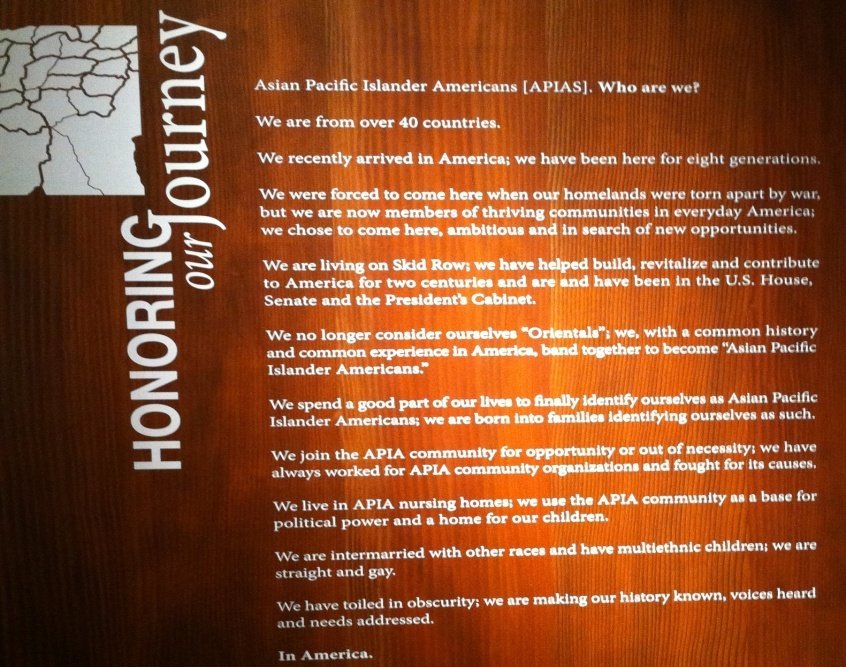
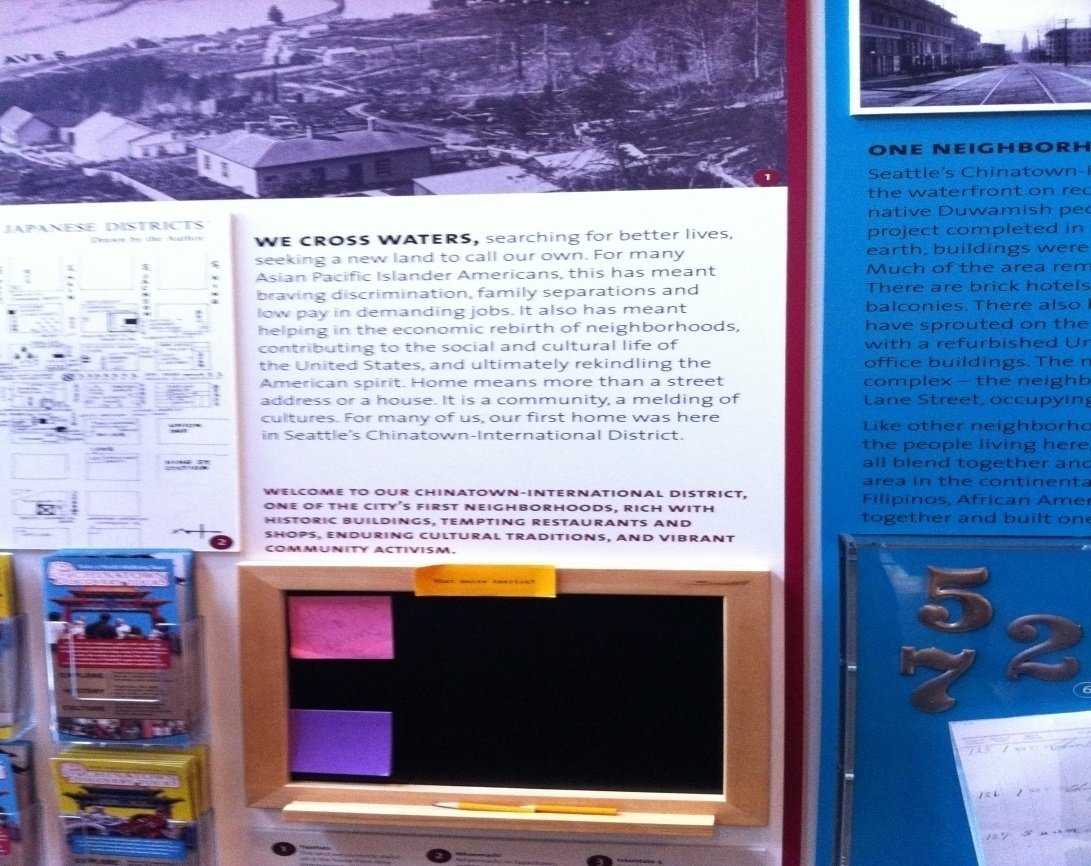
The Wing Luke Museum of the Asian Pacific American Experience is the only museum in America devoted to the Asian Pacific American experience. The culture of Asian Pacific American is presented using various collections available in the museum. One area in which the museum represents this culture is through food. The museum describes or traces the history of Asian Pacific American contributions in the American food industry.
Food was a critical constituent within the Asian family and community at large. The museums through its collection help to explain the connection of food to politics of Asians through issues such as sustainability, labor and nutrition and access. It also describes the heritage food recipe and process, adaptations and creativity, which has changed over the generations as a result of Asian immigration to America.
The Asian Pacific American are also presented through dual nature. This is showcased in the display of modern jewelry and glass in the museum. The museum has a series of histories of jewelry or metal smiting and glass which over the ages have been part and parcel of Asian American identity in the Pacific Northwest.
The jewelry and glass consist of complex metal work. The design was inspired by organic forms in resin and paper, botany, architectural class vessels, decorative micro-mosaic brooches, and an expression of identity and cultural roots. All these aspects were predominant in Asian society for ages.
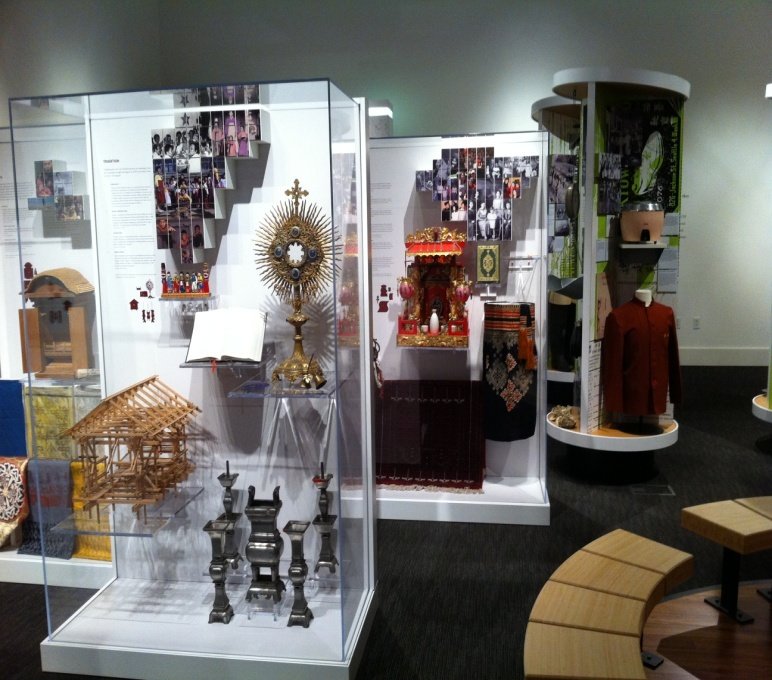
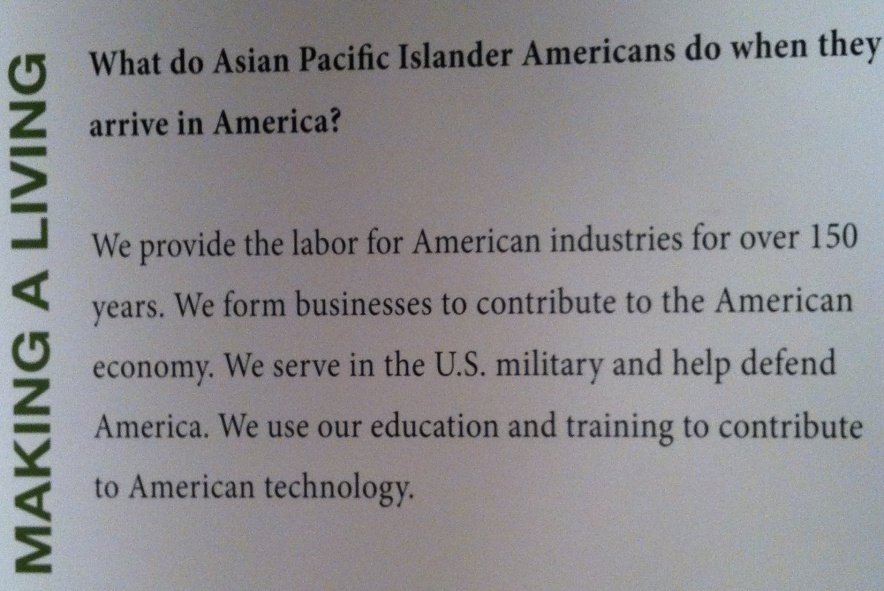
The epic tales were significant to Asian Pacific Americans too. The Wing Luke Museum represents this ethnicity through the well-known creatures and animals. The creatures and animals have for a long time characterized their history. Various animals such as the Chinese zodiac animals revitalize the history of Asian Pacific American.
These animals connect the Pacific and Asia folktales. The animals are well-known for their playful nature. Other animals with significant importance in Asian Pacific American are Monkey King are associated with loyalty, Moon rabbit is linked to loyalty and the Pig Child which is assigned the character of fiery romance. All these animals sketches the Asian Pacific history, culture and geography.
The museum also embraces technology in its heritage collection and presentation. The Museum has a library equipped with modern forms of technology equipments. They include computers, digital recorders, audiotapes and films. These tools play a role of recording and storage of information’s such as interviews and other oral collections. Visitors have a choice of listening to recorded interviews, cultural music and other information stored on these audio devices.
The dark part of the Asian Pacific American experience has not been well represented. The tribulations they faced such as slavery and the agony of sailing across the Atlantic Ocean is scanty (Aguirre and Turner 2010). Historians believe most of them died, suffered and were affected with various tropical diseases. Perhaps, lack of this information is to hide the miseries of the past and assist the Asian-Americans to concentrate in the positive part of history.
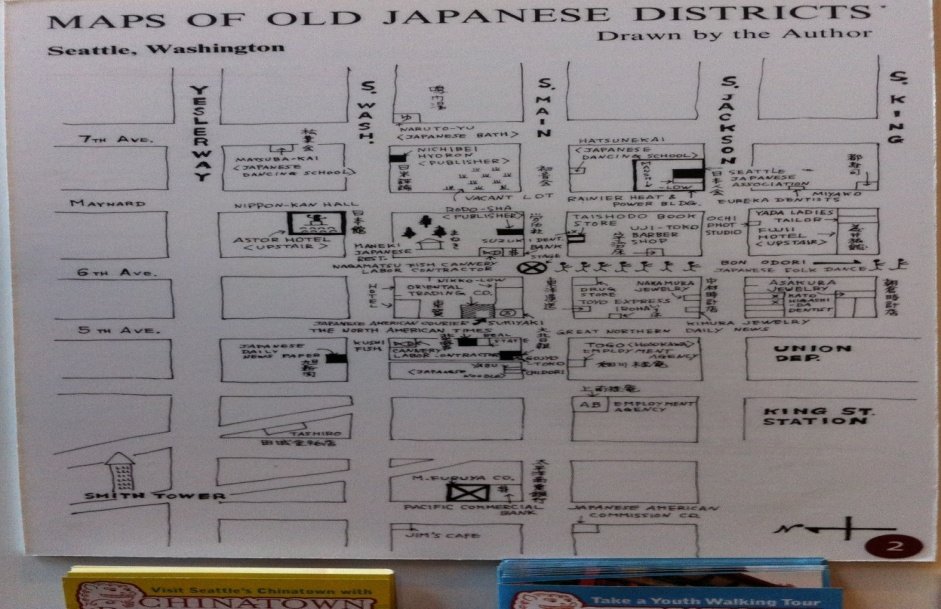
Northwest African-American Museum
The Northwest African-American Museum is found in Seattle, like the others mentioned earlier. The museum became operating as a nonprofit private organization in 2008. The birth of the museum was initiated by the Urban League of Metropolitan Seattle. The museum has documented, and displays unique cultural and historical collections of African-Americans in the Pacific Northwest and in the area around Seattle.
The museum links Seattle to the rest of the world. This is accomplished by honoring, celebrating and discovering the African-American community heritage, education, history and culture (Northwest African American Museum 2011). The museum presents the community by using artifacts, sculptures, folklores, stories among other types of forms.
The museum has a measurement of about 19,000 square feet floor and it encompasses various galleries. The first gallery is known as the journey, multipurpose and northwest gallery. The displays in the gallery describe the wider challenges the African-Americans faced while arriving in Northwest to model their lives.
The gallery, through various colors helps to underscore the diversity of experiences and draws various countries of origin of African-American, religion, families and friends during the early periods of their migrations. The historical pictures in the museum illustrate the changing society that continues to form and redesign the human experience. This gallery has many, artifacts, photos with intriguing histories that represent the ethnicities of the African-American heritage. There is also a Northwest gallery.
The gallery houses great history of African-American experiences in the Northwest. It explores the community leaders, cultural icons, early pioneers and unsung heroes. They are illustrated with portraits, sculptures and clay works (Northwest African American Museum 2011).
The museum traces the immigrants from various parts of Africa. African countries such as Kenya, Sudan, Eritrea and Ethiopia besides, other communities beyond the mentioned countries are also shown.
The museum singles out the Ethiopians immigrants in Seattle and explores their contribution to United States growth through fields such as medicine, corporate executives, entrepreneurship and education.
They are also credited for contributing their talents and experiences to countless social organizations, political parties and community groups. As one of the curators narrates, the African American community in Seattle has defined its cultural landscape and provided the needed appreciation of cuisine, historic infusion of language, sports, dress and music.
What I discovered about the Museum is the dark side of African-American is not extensively presented. Issues linked to African-American curses, witchcraft and others, which from the dark side of African American history, have not been explored. Perhaps, this has been done to avoid memories associated with such practices and to portray African-American as a culture not associated with unique practices.
The Nordic Heritage Museum
The Nordic is an international museum situated in Seattle. The museum shares the Nordic culture with the wider people of all ages and background. Its uniqueness has been attributed for its role in the preservation of arts, values, traditions and the heritage of Nordic people. The museum serves as a center for collection of various objects of arts, culture and acts as a center for educational and cultural experience. The story of Nordic people is represented in the museum through lifelike dioramas.
The diorama traces the Nordic and Scandinavian migration from the nineteenth century across the oceans to America. The diorama draws the story of the Nordic beginning of the voyage from the sea to crossing the Atlantic Ocean and Ellis Island. The exploration advances to experiences in New York and further expansion to the Pacific Northwest, Midwest and the Great Plains culminating at Ballard. It is at Ballard the Nordic forms a Northwest community; with a drug store, blacksmith shop, post office and a family home.
The history of the Nordic is also represented on the second floor of the museum. It has two dedicated the galleries which focus on fishing and logging industries. These two industries were the major employers of Nordic immigrants who had ready skills from their native lands.
Besides, the galleries explore notable Nordic pioneers who contributed tremendously to the settlement in the Pacific Northwest. What is intriguing is the treasured and vital items that immigrants carried alongside. These items which included, tools, furniture’s, textiles and folk costumes are found at the Fork Art Gallery.

Despite of Nordic communities having some differences, the gallery on the third floor illustrates the bonds that Scandinavian people had for each other. The floor has a designation of five major Scandinavian countries i.e. The Iceland, Norway, Sweden, Finland and Denmark. Each gallery draws the uniqueness of each country and the success and accomplishments in the Pacific Northwest.
Also present in the museum is the Tracie Music Library. The library has extensive collections of Nordic music and dances. Of importance is the work of Gordon Ekval. Gordon was a famous person who emphasized Nordic music and dance. His music was focused on Nordic tradition and culture. The library has embraced technology. It has hundreds of video and audio recordings with great documentation of Nordic traditional and folk music, folklore, music, costumes, dance and fork art.
These materials were collected by Tracie from the 19 -80’s. Besides the commercial documentations, the library has more than five hundred reel-to reel original field recordings credited to Tracie. They have been documented in the form of radio programs, conversations, presentation and dance programs.
Most of the reel recordings have been transformed to digital recordings, audio cassettes and some to Compact discs. Hence, they are readily available for listening. The technology has also been applied in preserving the Nordic history, photos, posters, music, display boards and dance records. These materials are displayed in the museum.
Another intriguing phenomenon in the Nordic museum is the “looking back and finding our future”. This section embraces collections of jewelry and fashions from different countries such as Norway, Island, Faroe Islands, Greenland and Denmark. The museums have meticulously designed and installed these collections which haze the past and the present Nordic traditions. This is in innovation and craft of Nordic designs. The museum pictures the significant nature and heritage of Nordic designs and how it influences the Nordic designers.
Nordic like any other society has its dark side. The subject of Nazi sympathizers and the vast wealth it gained during the Second World War has been hidden from the wider society.
Nordic countries for example, Sweden acted as transfer camps for raid of Norway. Perhaps, this is to avoid the atrocities and other human suffering that characterized the Nazism. The Nordic communities also posses chauvinism, most foreigners view chauvinism as a joke especially if they have lived in Nordic countries. Hence chauvinism has revealed itself in racism (Aguirre and Turner 2010).
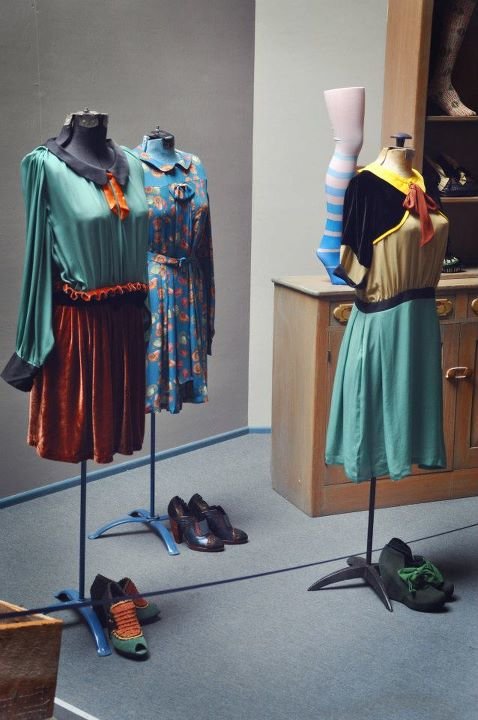
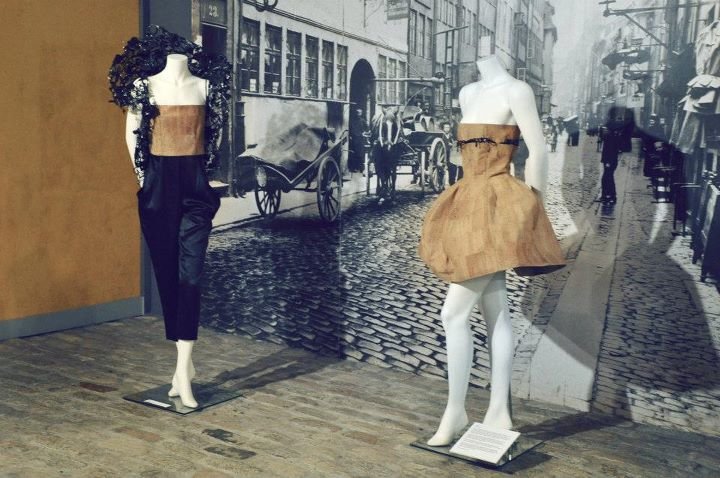
Literature Review and Analysis
A museum plays a significant role that succeeds various elements in the present society. While they are recognized as centers of community, cultural preservation and education, they are invoked in new styles that are beyond their conventional preserves. Their role has attracted a new phenomenon known as ” cultural tourism”. They have become centers for many cultural and tourism plans explored to stimulate economic and development in places they exist (Kotler 2001).
According to Leslie and Rantisi (2006) tourism has positively influenced museums. This is because it communicates the local culture to the “outside visitors”. Hence the communications give rise to an impetus for proper financial and conservation and support for other museums functions or activities. However, Timothy and Stephen (2006) argue that some people view tourism differently. They opine that mass cultural tourism creates degradation, cultural commoditization and site congestion.
Museums and Tourism
Cultural and heritage tourism is an important aspect of the American tourism sector. According to Timothy & Boyd (2006: 1) cultural tourism is among the oldest form of travel. It has over the ages become a kind of a group tourism in which visitors seek to familiarize with educational and nostalgic insight.
Heritage tourism is regarded as a form where participants may witness and learn about the cultural experience of cultural heritage of the “destination”. In his words, Li (2003: 248) asserts that “heritage tourism provides a concrete enthusiasm for conservation”.
However, Yuen (2006) observes that for heritage tourism to flourish, history and heritage go beyond the borders of preservation. Therefore, its importance should be suggested to the visitor. This will contribute to a more enriched environment in the structure of understanding the present (Nuryanti 1996).
People have become more interested in cultural experiences this trend has surged the interest of tourists in exploring alternatives in understanding the culture of different communities. Museums therefore have increasingly become an important center supporting tourism through entertaining and educating visitors.
Many researchers such as Timothy & Boyd (2006) links this process as part of interconnected, devising cultural life that supports the discovery of culture as a fabric. He further asserts that museums have stood as a popular choice for most people in learning their destination.
This is because they are actively involved in displaying and interpreting the local culture for the visitors. Nuryanti (2006) seems to agree with Timothy and Boyd; he explains that a museum provides a guide for a destination heritage by providing the vital information in context. Thus, they have become a “must-see” for tourist embracing cultural tourism as part of their cultural itinerary.
A Social Approach
Environmental themes and social history have formed part of the materials displayed in museums. Museums have depicted a different trend of presenting artifacts and in contextualization of exhibitions. This has demanded new approaches and methods to be embraced by museums.
In most cases, the museum’s collections have taken a different perspective of diachronic or synchronic approach. However, as Li (2003) notes most significant changes have happened of late, and a social approach has been a common phenomenon by majority of museums. Nuryanti (2006) assigns these new approaches of museums because of social, economic and technological changes.
Technology and globalization for instance, has altered the expectations of people in all spheres of life thus, culture has not been spared either. With technology infiltrating in the society, tourism has remained essential, so do culture and its utilization. Cultural heritage and museum sites make up a significant part in cultural and tourism programs.
A New Look at Visitors
Museums have adopted a new approach of ethnography. Ethnography allows a visitor to the museum to put himself or herself in a position of learning or asking about his or her culture in comparison to others. Perhaps, it is fascinating to note how the perception of the visitor has changed since ethnography began to alter the uni-linear cultural evolution embraced by the 19th century museums (Li 2003).
This infers that it is the culture of the visitor that need to be examined, judged, evaluated and tested rather than is exhibited. Hence, evaluations or the judgment of a visitor makes him or her to view museums in different perspective. One of the approaches is communicating and interpreting cultures of other communities to the advantage of the local community. The visitor learns or observes this during exhibitions.
Also, the visitor learns the importance of museums by assessing how they relieve the local communities and makes them recognize and understand other cultures in a health and social manner. Tuft and Milne (1999) contend that communicating and interpreting the local culture of the past and the present for the advantage of the visitor/tourist is essential. This is because it backs in spreading the culture of a given community in context.
Museum and Culture Formation
The Museum contributes greatly in cultural formation. It is an organization that has directed and influenced the growth of local and national culture. Tufts and Milne (1999: 614) Argues the museum acts as centers where the society and its members can “embraces the past and develop wisdom of their enriching identity”.
They are the main point in the society, a point of physical convergence where reflection, convergent thinking, knowledge and pleasure is condensed. The importance of the museums lies within their ability of collecting objects and putting them to some significant use and in context (Kotler 2001).
Therefore this ability of museums has influenced the importance of museums in cultural development and its role in the community and the society in general. Traditionally, museums were relied on preserving heritage; however, the public over time have become more and more reliant on external depiction of truth. Hence, museums have become indispensable in finding the truths about the people past and predicaments.
Leslie and Rantisi (2006) also note the exhibitions widely carried out by museums are designed to provide visitors with insight into American culture with a purpose of influencing the visitor’s behavior. Through exhibitions such as natural history, zoos and aquarium among others have created an awareness and knowledge and granted support towards caring and conservation of fauna and flora.
Conclusion
Museums are embraced for succeeding various roles in the society. These roles have contributed significantly in shaping people’s understanding of the past, present and future. Despite of being centers of education and conservation, new dimensions such as cultural tourism has of late been a trend of most museums across the world.
Cultural tourism has economically contributed to the growth of local and national through cultural activities of countries where museums are located. Also, tourism has shaped the social and environmental perspectives of the society because of the materials collected. Hence they have inclined towards either synchronic or diachronic methods in their exhibitions.
Reference List
Aguirre, Adalberto and Turner Jonathan H. 2010. American Ethnicity: The Dynamics and Consequences of Discrimination. New York: McGraw-Hill Companies.
Heritage Nordic Museum. 2011. “What’s Happening at the Museum.” Web.
Kotler, Neil. 2001. “New Ways of Experiencing Culture: the Role of Museums and Marketing Implications.” Museum Management and Curatorship 19 (4): 417-425. Web.
Leslie, Deborah and Rantisi Norma. 2006. “Governing the Design Economy in Montreal, Canada.” Urban Affairs Review 41 (3): 309-337. Web.
Li, Yiping. 2003. “Heritage Tourism: The contradictions between conservation and change.” Tourism and Hospitality Research, 4 (3): 247- 261. Web.
Northwest African American Museum. (2011). What is Happening at NAAM. Web.
Nuryanti, Wiendu. 1996. “Heritage and Postmodern Tourism.” Annals of Tourism Research 23 (2): 249-260. Web.
The Wing. 2011. Wing Luke Museum of the Asian Pacific American Experience. Web.
Timothy, Dallen J. and Boyd, Stephen W. 2006. “Heritage Tourism in the 21st Century: Valued Traditions and New Perspectives.” Journal of Heritage Tourism 1 (1): 1- 16. Web.
Tufts, Steven and Milne, Simon. 1999. “Museums: A Supply Side Perspective.” Annals of Tourism Research 26 (3): 613-631. Web.
Yuen, Belinda. 2006. “Reclaiming Cultural Heritage in Singapore.” Urban Affairs Review 41 (6): 830-854. Web.